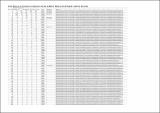Por favor, use este identificador para citar o enlazar a este item:
http://hdl.handle.net/10261/242257COMPARTIR / EXPORTAR:
 SHARE SHARE
 CORE
BASE CORE
BASE
|
|
| Visualizar otros formatos: MARC | Dublin Core | RDF | ORE | MODS | METS | DIDL | DATACITE | |

| Título: | Phylogenetic diversity and dominant ecological traits of freshwater Antarctic Chrysophyceae |
Autor: | Izaguirre, Irina; Unrein, Fernando CSIC ORCID; Schiaffino, M. Romina; Lara, Enrique CSIC ORCID; Singer, David; Balagué, Vanessa CSIC ORCID ; Gasol, Josep M. CSIC ORCID ; Massana, Ramon CSIC ORCID | Palabras clave: | Chrysophyceae Antarctic lakes Clone libraries 18S Illumina HiSeq Molecular and functional diversity |
Fecha de publicación: | abr-2021 | Editor: | Springer Nature | Citación: | Polar Biology 44: 941-957 (2021) | Resumen: | Previous studies conducted in summer in the lakes at Hope Bay (Antarctic Peninsula) between 1991 and 2007 showed a large numerical contribution of flagellated Chrysophyceae to the phytoplankton communities, particularly in the oligotrophic lakes, as evidenced by light microscopy observations and molecular fingerprinting. Given the ecological relevance of this group in these Antarctic microbial foodwebs, we carried out further molecular analyses (clone libraries and 18S Illumina high throughput sequencing) to characterize their phylogenetic diversity. The results of this study significantly increased the retrieved Chrysophyceae biodiversity. Clone libraries in two selected lakes (one oligotrophic and one mesotrophic) yielded 12 different chrysophycean OTUs, whereas 81 Swarm OTUs were recovered from six lakes using Illumina HiSeq. With the combination of both methods, we observed sequences of all the chrysophyte known clades, although most of the diversity belonged to Clade D, a group comprising mixotrophic and heterotrophic species. The percentage of reads for this clade in Illumina HiSeq ranged from 30% to 96% of the total Chrysophyceae reads. Based on experiments and observations, we also describe the main ecological traits of this group: the dominant taxa were small pigmented flagellates, well adapted to survive in oligotrophic systems, sometimes abundant under ice-cover subjected to low light intensities, and that have phagotrophic behavior. The used combination of methods allowed us to characterize the biodiversity and ecology of the Chrysophyceae, the dominant phytoplankton group in the oligotrophic lakes of this Maritime Antarctic region | Descripción: | 17 pages, 6 figures, 3 tables, supplementary information https://doi.org/10.1007/s00300-021-02850-3 | Versión del editor: | https://doi.org/10.1007/s00300-021-02850-3 | URI: | http://hdl.handle.net/10261/242257 | DOI: | 10.1007/s00300-021-02850-3 | ISSN: | 0722-4060 | E-ISSN: | 1432-2056 |
| Aparece en las colecciones: | (RJB) Artículos (ICM) Artículos |
Ficheros en este ítem:
| Fichero | Descripción | Tamaño | Formato | |
|---|---|---|---|---|
| Izaguirre_et_al_2021_postprint.pdf | 4,35 MB | Adobe PDF |  Visualizar/Abrir | |
| Izaguirre_et_al_2021_suppl_1.pdf | 1,48 MB | Adobe PDF |  Visualizar/Abrir | |
| Izaguirre_et_al_2021_suppl_2.pdf | 57,19 kB | Adobe PDF |  Visualizar/Abrir | |
| Izaguirre_et_al_2021_suppl_3.pdf | 77,93 kB | Adobe PDF |  Visualizar/Abrir |
CORE Recommender
SCOPUSTM
Citations
2
checked on 20-abr-2024
WEB OF SCIENCETM
Citations
3
checked on 28-feb-2024
Page view(s)
89
checked on 24-abr-2024
Download(s)
99
checked on 24-abr-2024
Google ScholarTM
Check
Altmetric
Altmetric
NOTA: Los ítems de Digital.CSIC están protegidos por copyright, con todos los derechos reservados, a menos que se indique lo contrario.
